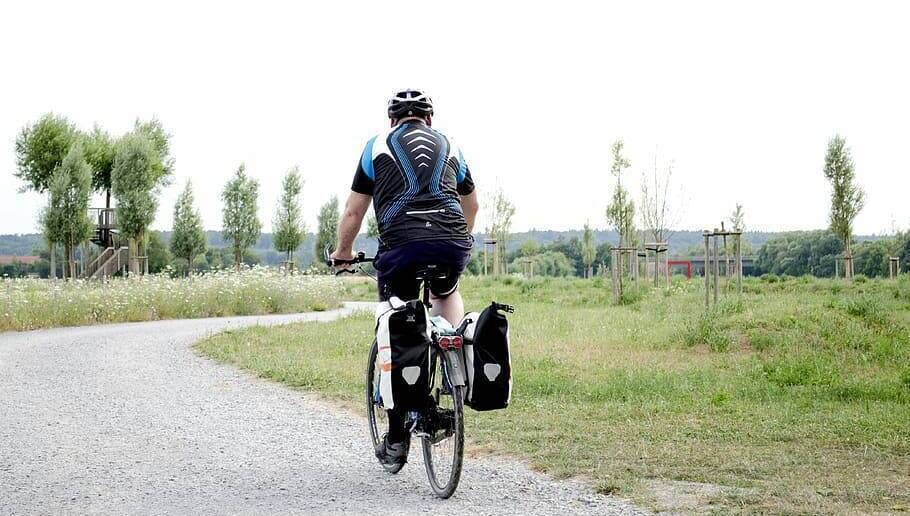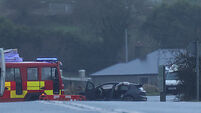New cycling network to connect 200 cities, towns and villages across Ireland

Connor Synott, Transport Minister Eamon Ryan and Tola Gahan cycle along a section of the Grand Canal Greenway between Sallins and Aylmer Bridge, CO Kildare, at the launch of Ireland's first National Cycle Network (NCN). Picture: Niall Carson/PA
The Government has launched a new plan which will see 3,500km of cycle facilities delivered by 2040.
When completed, the National Cycling Network (NCN) will connect more than 200 cities, towns and villages of over 5,000 population around the island — meaning more than 2.8 million people will benefit.
The plan was launched by Transport Minister Eamon Ryan on Wednesday, who called it a “key element” in providing alternatives to private cars.
He said: “Active modes are the most sustainable modes of transport and enabling people to walk or cycle for their daily journeys is a key element in meeting our decarbonisation targets. For this to happen, we need to provide them with a safe and reliable alternative to using the private car.
"The Government is deeply committed to its efforts to decarbonise transport. I firmly believe that through our collective efforts, we can deliver on our climate objectives and that the NCN represents a significant step in that direction.”
A total of 85 corridors have been proposed as part of the plan, with the aim being that 80% of households and nearly 90% of jobs will be located within 5km of the network.
It is envisaged that about 1,000km of the plan (28% of the network) will be implemented by the end of 2030 as part of phases 1 and 2. Phase 3 will be implemented between 2031 and 2040.
Mr Ryan was speaking at the launch of the plan, which coincided with the opening of the latest extension to the Grand Canal Greenway — which will form more than 400km of the existing greenways which will act as key NCN corridors.
In addition, over 900km of additional planned and proposed greenways will be included in the network.

The Government said the remaining 2,200 km of the NCN would be provided along existing road infrastructure.
This will ensure “cycling infrastructure will be, for the most part, segregated from traffic, allowing cyclists to travel in their own space, away from road vehicles and with a higher level of safety and comfort where possible”.
Key areas on the network have been split into ‘primary nodes’, and ‘secondary nodes’.
Among the primary nodes (consisting of cities and / or large towns with a population of over 20,000 people) are Cork, Ennis, Tralee and Waterford, with Carrigaline, Cobh, Cork Airport, Mallow and Midleton featuring within the more than 50 ‘secondary nodes,’ (consisting of medium sized towns with a population of between 10,000 and 20,000 people, as well as major tourist attractions outside urban areas).
The identified NCN corridors are about 4km in width and provide an "indicative alignment for the development of future routes".
Public responses to the plan included the use the NCN for recreational activities such as cycling with family, going for a leisurely bike ride, or as a way to stay active and healthy.
Additionally, there was enthusiasm about the “opportunity to explore new areas and scenic routes through the use of the NCN”.
An indicative cost estimate for the delivery of the NCN is between €1,490m and €1,910m, depending on the infrastructure types used across the network.










